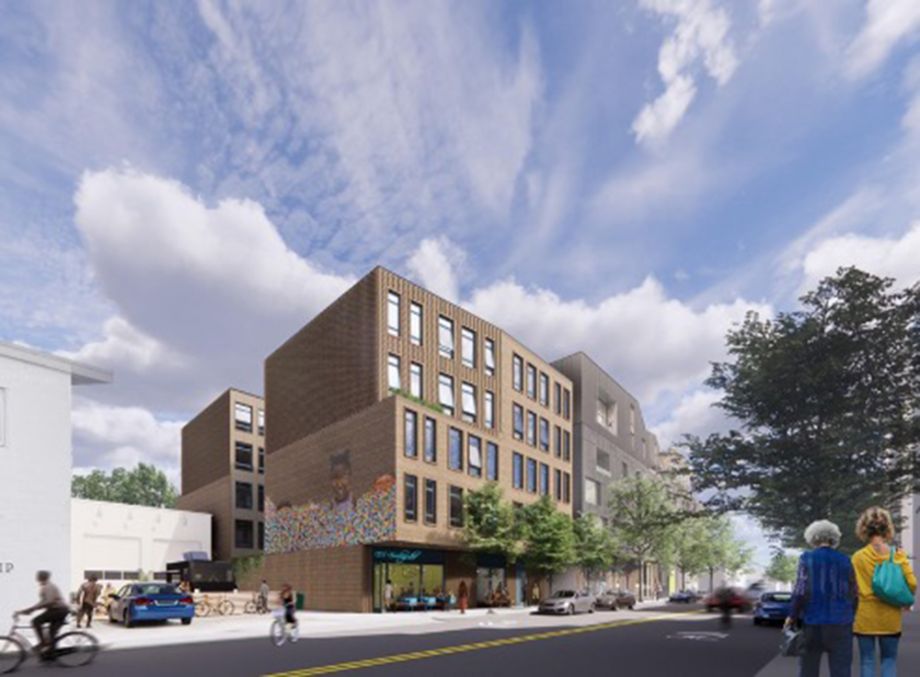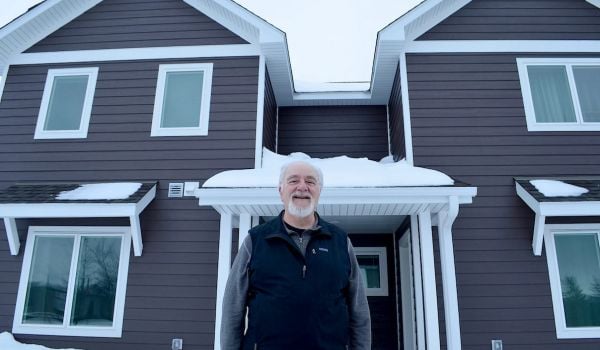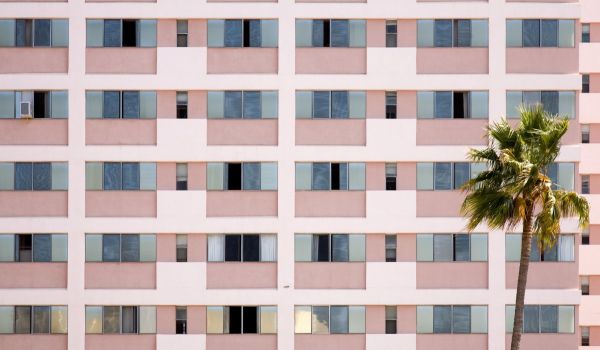In most big cities, the bulk of greenhouse gas emissions that contribute to global warming are produced by buildings. But the development of new buildings can be both the engine that pushes cities’ economies forward and a strategy for correcting inequities, like the shortage of affordable housing for low-income people. So if cities want to reduce their carbon emissions, they have to find ways to make all of their buildings less harmful and more efficient — especially when considering the amount of new development that’s expected in the near future.
“Essentially everything we’ve built on the planet so far, we’re going to build again in the next four decades,” says Vincent Martinez, the chief operating officer at Architecture 2030, a nonprofit group pushing to eliminate carbon emissions from the built environment. “An entire world on this world.”
Increasingly, cities are trying to tie climate and equity goals together. Earlier this month, Boston Mayor Marty Walsh announced that the city is awarding $34 million to support 14 affordable-housing projects, in the first round of housing awards to be granted since Covid-19 shut down much of the city last year. The funds will help construct 608 new units of income-restricted housing and preserve 233 units more, according to a press release. The fourteen projects that will receive funding include a mix of homeownership and rental units, according to the city. All of the rental units must be permanently affordable, and the homeownership units are deed-restricted for 50 years. The approved projects target a range of incomes below the area median, which in Boston is $113,300 for a family of four. Applications that serve families earning less than half of the median income received preference, according to a request for proposals issued last summer. All of the projects are required to set aside at least 10 percent of units for previously unhoused families.
And for the first time, the city is requiring that projects receiving funding from the Department of Neighborhood Development meet the city’s Zero Emissions Building standards, part of its ongoing effort to achieve carbon neutrality by 2050. The city updated its Carbon Action Plan in 2019, and shortly after, Walsh signed an executive order requiring all new public buildings to be built to a “Zero Net Carbon” standard. In previous years, the Department of Neighborhood Development has encouraged net-zero emissions design for groups applying for funding but not required it, says Jessica Boatright, the city’s deputy director of neighborhood housing development.
“We’ve had progressively more green design involved in our expectations and requirements of buildings for a while,” Boatright says.
The Zero Emissions Building standards target the building’s energy use during its period of occupation. They cover things like the buildings’ insulation and airtightness, the efficiency of heating and cooling systems, and the energy sources that power the buildings. Other factors, like the “embodied carbon” of the materials used for construction, are not included in the standards, says Alison Brizius, Boston’s director of climate and environmental planning.
“For these buildings, we’re really looking at how do we build the most efficient, low-carbon, low-energy, well-designed building and then power it with renewable sources,” Brizius says. “When we’re talking about net zero, that’s what we’re talking about here.”
The funding for the projects comes partially from the city’s linkage fee, which requires builders to pay a certain fee for every square foot of new commercial development in the city, which is then dedicated to funding affordable housing. The projects are also partly funded through the Community Preservation Act, a 1% property tax increase approved by voters in 2016. (This year’s allocation of those funds, totaling $3.6 million, still needs to be officially approved.) Boatright says that applicants typically apply for funding from the Department of Neighborhood Development after they have site control, a budget, a conceptual design, and commitment from at least one lender, but before they apply for additional funding from the state. Because the city and state have been gradually increasing sustainable-design standards, and the development community in general is pushing toward more efficient buildings, the new requirement didn’t make any noticeable difference in who applied for DND funds this year, Boatright says.
“It was really important to us when we commissioned the zero-emissions building study and then when we added into our requirements for this year that the Zero Emissions readiness requirement would have little to no cost increase for building affordable housing,” Boatright says. “And we actually think that with [state] rebates and incentives that the buildings will ultimately be less expensive to build and offer additional opportunities for savings.”
Building net-zero buildings is still more costly upfront, says Rebecca Plaut Mautner, interim director of real estate for the Jamaica Plain Neighborhood Development Corporation, which is among the groups to receive a portion of the $34 million announced earlier this month. But the rebates and incentives that the state provides for efficient systems make a meaningful difference in the cost. And because everyone knows sustainability standards are becoming more stringent, it’s getting easier to meet them. For example, Mautner says, developers may have had to pay around $100,000 to hire a design consultant to meet the Zero Emissions Building standards a few years ago, whereas today most architecture firms will either provide the same service in-house or expect the cost of the consultant to come out of their own fee.
Designing buildings that don’t create greenhouse gas emissions through their daily use is relatively straightforward by now. The longer-term goals of addressing embodied carbon, which are recommended in Boston’s Climate Action Plan, are more challenging. And they have to be weighed against other priorities.
“I’m responsible for housing for hundreds of low-income families and making sure they’re not going to be homeless during the next climate event,” Mautner says. “I’m going to think about that before I think about embodied carbon.”
More cities and states are figuring out how to implement zero-emissions standards for new buildings, says Martinez, of Architecture 2030. It will be much harder to eliminate carbon emissions from existing buildings, particularly the thousands of small, single-family homes, often occupied by low-income homeowners, that make up the environment of many urban neighborhoods. But that’s what needs to happen to stave off the worst impacts of climate change.
“Ultimately,” Martinez says, “we need to do everything.”
This article is part of Backyard, a newsletter exploring scalable solutions to make housing fairer, more affordable and more environmentally sustainable. Subscribe to our weekly Backyard newsletter.

Jared Brey is Next City's housing correspondent, based in Philadelphia. He is a former staff writer at Philadelphia magazine and PlanPhilly, and his work has appeared in Columbia Journalism Review, Landscape Architecture Magazine, U.S. News & World Report, Philadelphia Weekly, and other publications.
Follow Jared .(JavaScript must be enabled to view this email address)


















